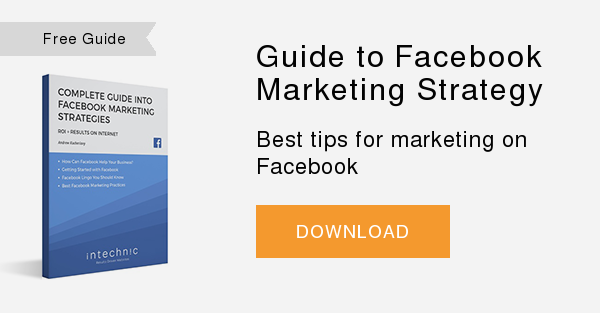How to Adjust Your Facebook Strategy to the New Algorithm
 Facebook wants to change the way that its users consume news and engage with their friends on the site, and like it or not, that’s going to affect the way businesses use Facebook for marketing. The social media giant has already gone through several algorithm changes this year, and one of the most recent changes relates to the content that users see on their News Feed. Facebook announced the update in August, saying: “Our goal is to show the right content to the right people at the right time so they don’t miss the stories that are important to them. As part of that we want to make sure that the best quality content is being produced, surfaced and shared. Our latest update to the News Feed ranking algorithm helps ensure that the organic content people see from the Pages they are connected to is the most interesting to them.” So what does all this mean for business owners who maintain Pages on Facebook? Your organic content may not end up on your fans’ News Feeds if Facebook’s new ranking algorithm doesn’t deem your content to be high quality and relevant to your fans’ interests. However, the new change doesn’t have to spell disaster for social media marketing on Facebook; businesses that know what Facebook is looking for can employ certain strategies to give their organic content a better chance of being seen. Here are 5 ideas to consider when adjusting your Facebook strategy for the new algorithm. Post about trending topics. Facebook’s new algorithm is designed so that relevant, time-sensitive updates that naturally generate a lot of engagement between friends will appear high in the News Feed. For example, if a user’s Facebook friends are posting about the Academy Awards during the live telecast, those updates will likely appear high in the News Feed so that the user sees them while the Academy Awards are still on. Updates are also tailored to a user’s interests; for example, someone who posts a lot about new tech or has liked a lot of tech Pages is likely to see plenty of (you guessed it) tech updates in their News Feed. What all this boils down to is that businesses should be sharing current news that is relevant to their industry and customer base. Sites like Buzzsumo can help you find news stories to share by doing a keyword search for posts that have recently gotten a lot of shares on social media. Post frequently. Facebook has this to say about trending topics: “If a Page posts about a trending topic or if a post sees a high velocity of engagement early on that then drops off, that post may begin to see increased distribution and less distribution over time. Pages should keep producing great content that is relevant and resonates with their audience.” That means that even if you produce an amazing piece of content that initially gets a lot of shares, you can’t coast on it forever because it has an expiration date. Make sure you’re regularly generating ideas for fresh content to post on your Facebook page. Avoid posting click-bait. Even if you’re not familiar with the term “click-bait,” you’ve probably seen it on your own Facebook news feed. These are the posts that share links with enticing headlines such as “You Won’t Believe What Scientists Just Discovered” that play on readers’ curiosity to get them to click, but do not actually contain significantly valuable content in the body of the post. Facebook is cracking down on click-bait by paying attention to the bounce rate of posts with links—that is, how quickly Facebook users leave a page that they’ve just clicked through to. If your posts have a high bounce rate, they will rank lower in the algorithm. Don’t ask for likes. Facebook considers posts that say things such as “Click like!” to be a form of gaming the system and will take that into account in its ranking. Because of this, posts that ask users to like them are unlikely to be seen by your fans. Instead of blatantly asking users to like or engage with your posts, try posting content that will encourage fans to engage with you organically. For example, you could post a question that your fans can answer in a comment. Include links with a visual preview. Because Facebook wants to be a place where users can go for all their news, their updated algorithm is lending extra weight to posts that link to high-quality content on other reputable sites. Make sure that you’re periodically posting links to articles that are relevant to your industry as well as your own blog posts that you think your Facebook fans will be interested in. When you post a link to your blog post, make sure that you’re including an image preview, as links with visuals get more clicks. If you already have a photo in the blog post, Facebook should generate it as a thumbnail when you enter the URL for the page.
Facebook wants to change the way that its users consume news and engage with their friends on the site, and like it or not, that’s going to affect the way businesses use Facebook for marketing. The social media giant has already gone through several algorithm changes this year, and one of the most recent changes relates to the content that users see on their News Feed. Facebook announced the update in August, saying: “Our goal is to show the right content to the right people at the right time so they don’t miss the stories that are important to them. As part of that we want to make sure that the best quality content is being produced, surfaced and shared. Our latest update to the News Feed ranking algorithm helps ensure that the organic content people see from the Pages they are connected to is the most interesting to them.” So what does all this mean for business owners who maintain Pages on Facebook? Your organic content may not end up on your fans’ News Feeds if Facebook’s new ranking algorithm doesn’t deem your content to be high quality and relevant to your fans’ interests. However, the new change doesn’t have to spell disaster for social media marketing on Facebook; businesses that know what Facebook is looking for can employ certain strategies to give their organic content a better chance of being seen. Here are 5 ideas to consider when adjusting your Facebook strategy for the new algorithm. Post about trending topics. Facebook’s new algorithm is designed so that relevant, time-sensitive updates that naturally generate a lot of engagement between friends will appear high in the News Feed. For example, if a user’s Facebook friends are posting about the Academy Awards during the live telecast, those updates will likely appear high in the News Feed so that the user sees them while the Academy Awards are still on. Updates are also tailored to a user’s interests; for example, someone who posts a lot about new tech or has liked a lot of tech Pages is likely to see plenty of (you guessed it) tech updates in their News Feed. What all this boils down to is that businesses should be sharing current news that is relevant to their industry and customer base. Sites like Buzzsumo can help you find news stories to share by doing a keyword search for posts that have recently gotten a lot of shares on social media. Post frequently. Facebook has this to say about trending topics: “If a Page posts about a trending topic or if a post sees a high velocity of engagement early on that then drops off, that post may begin to see increased distribution and less distribution over time. Pages should keep producing great content that is relevant and resonates with their audience.” That means that even if you produce an amazing piece of content that initially gets a lot of shares, you can’t coast on it forever because it has an expiration date. Make sure you’re regularly generating ideas for fresh content to post on your Facebook page. Avoid posting click-bait. Even if you’re not familiar with the term “click-bait,” you’ve probably seen it on your own Facebook news feed. These are the posts that share links with enticing headlines such as “You Won’t Believe What Scientists Just Discovered” that play on readers’ curiosity to get them to click, but do not actually contain significantly valuable content in the body of the post. Facebook is cracking down on click-bait by paying attention to the bounce rate of posts with links—that is, how quickly Facebook users leave a page that they’ve just clicked through to. If your posts have a high bounce rate, they will rank lower in the algorithm. Don’t ask for likes. Facebook considers posts that say things such as “Click like!” to be a form of gaming the system and will take that into account in its ranking. Because of this, posts that ask users to like them are unlikely to be seen by your fans. Instead of blatantly asking users to like or engage with your posts, try posting content that will encourage fans to engage with you organically. For example, you could post a question that your fans can answer in a comment. Include links with a visual preview. Because Facebook wants to be a place where users can go for all their news, their updated algorithm is lending extra weight to posts that link to high-quality content on other reputable sites. Make sure that you’re periodically posting links to articles that are relevant to your industry as well as your own blog posts that you think your Facebook fans will be interested in. When you post a link to your blog post, make sure that you’re including an image preview, as links with visuals get more clicks. If you already have a photo in the blog post, Facebook should generate it as a thumbnail when you enter the URL for the page.  The changes to the Facebook algorithm can actually work in a savvy marketer’s favor; after all, your posts won’t carry as much weight with Facebook users if they are surrounded by spammy posts and click-bait headlines. By focusing on producing high quality content that will actually benefit your customers, you’ll ensure that the most relevant audience is seeing your posts.
The changes to the Facebook algorithm can actually work in a savvy marketer’s favor; after all, your posts won’t carry as much weight with Facebook users if they are surrounded by spammy posts and click-bait headlines. By focusing on producing high quality content that will actually benefit your customers, you’ll ensure that the most relevant audience is seeing your posts.







